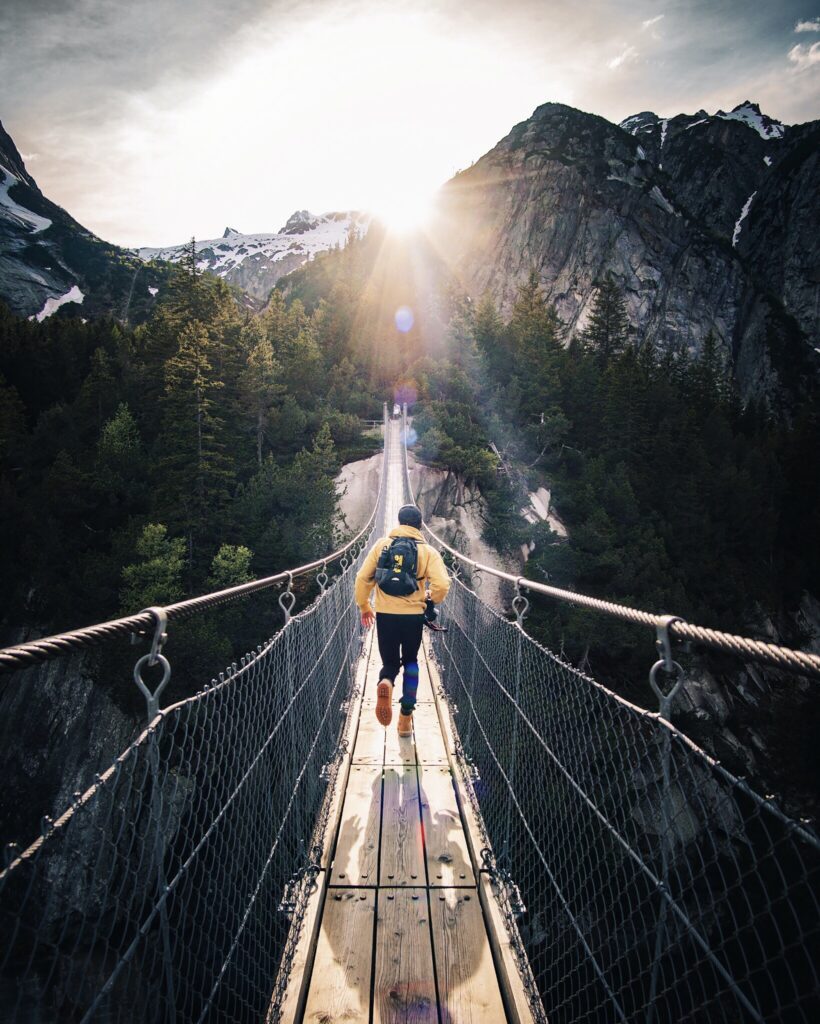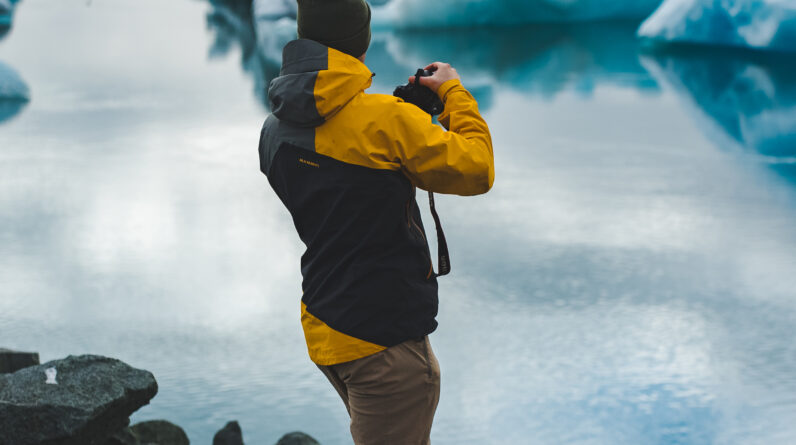
Welcome to an article that will take you on an adventurous journey exploring the waters with Zoik inflatable kayaks. In this article, we will discuss the benefits and features of these kayaks, and how they provide an exciting and convenient way to discover new waterways. You’ll also learn about the different types of Zoik inflatable kayaks available and why they are a great option for outdoor enthusiasts. So grab your paddle and get ready to embark on a thrilling inflatable kayak adventure with Zoik!

Exploring the Waters: An Inflatable Kayak Adventure
When it comes to exploring the waters, inflatable kayaks are a fantastic option. They offer convenience, portability, and ease of use, making them perfect for adventurous souls who crave the thrill of paddling through various waterways. However, selecting the right inflatable kayak can make all the difference in ensuring a successful and enjoyable experience. In this article, we will guide you on selecting the right kayak, the essential equipment and gear you’ll need, techniques for paddling, planning your adventure, safety precautions, exploring wildlife and nature, maintaining and storing your kayak, and ways to enhance your kayak experience.
Understanding the Different Types of Inflatable Kayaks
There are various types of inflatable kayaks available on the market, each designed to cater to different needs and preferences. It’s essential to understand these types to make an informed decision. Recreational kayaks are perfect for beginners and those seeking a leisurely ride, while touring kayaks are ideal for longer trips, thanks to their sleek design and increased stability. Whitewater kayaks are built to withstand the rigorous conditions of rapids and are perfect for adrenaline junkies. Lastly, fishing kayaks are specially designed with additional features and space for anglers who want to combine their love for kayak adventures with fishing.
Considering the Size and Weight Capacity
To ensure a comfortable and safe experience, you need to consider the size and weight capacity of the inflatable kayak. Kayaks come in various sizes, and it’s crucial to choose one that suits your body type and preferences. Additionally, you should check the weight capacity of the kayak to ensure that it can handle your weight along with any additional gear or equipment. It’s always better to choose a kayak with a higher weight capacity to provide extra stability and room for gear.
Evaluating the Material and Durability
When it comes to inflatable kayaks, durability is key. You want a kayak that can withstand the rigors of the water and any potential obstacles you may encounter. Higher-quality inflatable kayaks are typically made with PVC materials, which offer excellent durability and resistance to punctures. Additionally, kayaks with reinforced chambers and multiple air chambers are more reliable and ensure better buoyancy and stability in case of punctures.
Essential Equipment and Gear
To make the most of your inflatable kayak adventure, it’s important to have the right equipment and gear on hand. Let’s explore the essential items you should consider.
Choosing Paddles and Oars
The right paddle or oar can elevate your kayaking experience. When selecting paddles, consider factors such as length, weight, and material. Paddle lengths vary based on your height and the width of your kayak, and it’s essential to choose ones that allow for comfortable and efficient strokes. Additionally, lightweight materials like fiberglass and carbon fiber can reduce fatigue during long trips.
Selecting the Proper Safety Equipment
Safety should always be a top priority when embarking on a kayak adventure. Personal floatation devices (PFDs) are a must-have for everyone on board. Look for PFDs that are specifically designed for kayaking and ensure that they are the appropriate size and fit snugly. Additionally, you should have a whistle or signaling device in case of emergencies and a waterproof first aid kit with essentials like adhesive bandages, antiseptic wipes, and pain relievers.
Packing Essential Gear for the Adventure
To make your kayak adventure more enjoyable, pack essential gear for various situations. A dry bag is essential to keep your belongings safe and dry. It’s also a good idea to bring sunscreen, a hat, sunglasses, and a waterproof phone case to protect yourself from the sun and stay connected. Additionally, consider bringing a waterproof camera to capture the stunning views and memorable moments along the journey. Snacks, water, and a map or GPS device are also important items to keep you nourished and on track.
Inflating and Assembling Your Kayak
Now that you have the perfect inflatable kayak and the necessary equipment, it’s time to inflate and assemble your kayak. Follow these steps to ensure a smooth and hassle-free setup.
Identifying the Inflation Points
Every inflatable kayak has inflation points, typically located on the sides or floor. Locate these points before inflating your kayak as they vary depending on the brand and model. Some kayaks may have separate inflation points for different chambers, so familiarize yourself with the specific locations before starting.
Using the Provided Pump or Manual Inflation
Inflatable kayaks generally come with a pump, either manual or electric, to make the inflation process easier. Follow the manufacturer’s instructions to inflate your kayak properly. Manual pumps require physical effort and can take longer, while electric pumps are more convenient and save time. Whichever method you choose, ensure that the kayak is fully inflated and all chambers are firm.
Assembling the Kayak Components
Once your kayak is inflated, it’s time to assemble any additional components. Some inflatable kayaks come with removable seats, footrests, and storage options that need to be installed. Follow the manufacturer’s instructions to assemble these components securely. Ensure that everything is stable and properly attached before getting on the water.
Proper Techniques for Paddling
Now that your kayak is ready to go, it’s important to learn and master the proper techniques for paddling. Proper paddling techniques ensure efficiency, control, and a smoother ride. Let’s explore basic and advanced techniques for paddling.
Mastering Basic Paddling Strokes
When paddling, a basic technique to master is the forward stroke. Start by sitting upright with your legs comfortably positioned in the kayak. Hold the paddle with both hands, shoulder-width apart, and dip the blade into the water near your toes. Pull the blade back towards your body, keeping it parallel to the kayak, and rotate your torso to generate power. Alternate paddle strokes on each side for a consistent forward motion.
Another essential stroke is the sweep stroke, which allows you to turn the kayak. To perform a sweep stroke, rotate your torso to face the direction you want to turn and extend the paddle blade out to the side. Drag the paddle blade from the bow to the stern, keeping it close to the kayak, and use your body’s rotation to provide power. Practice these basic strokes to feel comfortable and confident on the water.
Understanding Advanced Paddling Techniques
Once you have mastered the basic strokes, it’s time to explore advanced paddling techniques. These techniques are especially useful when encountering strong currents, navigating rough waters, or maneuvering through obstacles. The draw stroke, for example, allows you to move the kayak sideways. To perform a draw stroke, place the paddle blade perpendicular to the kayak, close to the hull or waterline. Pull the blade towards yourself, maintaining pressure against the water, and the kayak will move sideways.
The brace stroke is another advanced technique that helps maintain balance and stability. It involves placing the paddle blade flat on the water’s surface and using it as a support to prevent capsizing. To perform the brace stroke, lean your body away from the side you want to brace, extend your arm, and press the paddle blade down against the water. Practice these advanced techniques in calm waters before attempting them in challenging conditions.
Navigating Different Water Conditions
Water conditions can vary, and it’s essential to adapt your paddling technique accordingly. In calm or slow-moving water, focus on paddling efficiently and enjoy the tranquility around you. As you encounter faster currents or rougher waters, adjust your strokes to provide more power and control. If you encounter obstacles like rocks or fallen trees, use your sweep stroke or draw stroke to maneuver around them. Remember to always be vigilant of your surroundings and make any necessary adjustments to ensure a safe and enjoyable ride.

Planning Your Kayak Adventure
To make the most of your inflatable kayak adventure, proper planning is crucial. Follow these steps to plan an unforgettable journey.
Researching Suitable Waterways and Destinations
First and foremost, research suitable waterways and destinations for your adventure. Consider factors such as distance, difficulty level, and scenic beauty. Consult guidebooks, online resources, and local kayak clubs for recommendations. Be mindful of any restrictions or permits required for certain areas to ensure you comply with regulations. By conducting thorough research, you can discover hidden gems and plan a route that matches your preferences and skill level.
Considering Weather and Current Conditions
Weather and current conditions play a significant role in the safety and enjoyment of your kayak adventure. Check the weather forecast for your chosen date and location. Avoid kayaking in inclement weather, such as heavy rain, thunderstorms, or strong winds. Additionally, be aware of tides, currents, and water levels. Paddling against a strong current can be exhausting, so plan your route accordingly. Always prioritize safety and reschedule your adventure if conditions are unfavorable.
Determining the Duration and Distance of the Trip
The duration and distance of your trip depend on various factors such as your skill level, the water conditions, and the time you have available. Assess your abilities realistically and plan a trip that matches your comfort level. Consider your stamina and how far you are willing to paddle each day. Don’t forget to account for breaks, lunch stops, and time to explore interesting sights along the way. Planning the duration and distance of your trip ensures that you have a realistic itinerary and are well-prepared for the journey.
Safety Precautions and Emergency Preparedness
Safety should always be a top priority when engaging in any water activity. Follow these safety precautions and be prepared for any emergency situations.
Wearing Adequate Personal Floatation Devices
Wearing a personal floatation device (PFD) is non-negotiable when kayaking. PFDs are designed to keep you buoyant in the water and should be worn at all times, even if you are a strong swimmer. Ensure that your PFD fits properly and is the appropriate size for your weight and body type. Adjust the straps to achieve a snug fit without restricting your movement. Your PFD should be approved by relevant safety authorities and in good condition, free from tears or other damage.
Learning Basic Water Rescue Techniques
While kayaking is generally a safe activity, it’s crucial to be prepared for unforeseen circumstances. Take the time to learn basic water rescue techniques. Knowing how to perform a T-rescue, where you assist another kayaker who has flipped their kayak, can make a difference in a potentially dangerous situation. Additionally, practice self-rescue techniques in case you capsize. Being prepared with proper rescue skills can help you and your fellow paddlers stay safe on the water.
Keeping Emergency Contact Information
Before venturing out on your kayak adventure, inform a trusted friend or family member of your plans. Provide them with essential details such as your intended route, duration of the trip, and emergency contact information. In case of an emergency, they can take appropriate actions or notify the authorities. Carry a waterproof pouch with your identification, emergency contact information, and any necessary medical information. Having these details readily available ensures that help can be reached efficiently if needed.

Exploring Wildlife and Nature
One of the joys of kayaking is the opportunity to explore and appreciate the natural world around you. Take the time to immerse yourself in the beauty of wildlife and nature.
Observing Marine Life and Aquatic Habitats
As you paddle through various waterways, keep an eye out for marine life and aquatic habitats. You may spot fish swimming beneath your kayak, water birds gliding above, or even dolphins and seals in coastal areas. Observe from a respectful distance, as not to disturb their natural behavior. Educate yourself about the creatures you encounter, and appreciate the interconnectedness of all living things in these diverse ecosystems.
Identifying Plants and Birds Along the Way
In addition to wildlife, keep an eye out for unique plants and birds along your kayak journey. Wetlands, marshes, and coastal areas are often home to a variety of flora and fauna. With a keen eye, you may notice vibrant wildflowers, ancient mangrove forests, or elegant herons perched on branches. Take the time to learn about the local plant species and bird populations in the areas you explore. These encounters will leave you with a deeper appreciation for the intricacies of nature.
Appreciating the Serenity of Nature
As you paddle along, embrace the serenity of nature and the opportunity to disconnect from the hustle and bustle of daily life. Kayaking allows you to immerse yourself in the sounds of flowing water, the rustling of leaves, and the gentle breeze against your face. Take time to pause, breathe in the fresh air, and appreciate the stillness of your surroundings. These moments of tranquility can be rejuvenating and offer a sense of peace and connection with the natural world.
Maintaining and Storing Your Inflatable Kayak
Proper maintenance and storage of your inflatable kayak are crucial to ensure its longevity and performance. Follow these guidelines to keep your kayak in excellent condition.
Cleaning and Drying the Kayak After Use
After each kayaking trip, it’s essential to clean and dry your kayak thoroughly. Use fresh water and a mild detergent to wash away any dirt or debris that may have accumulated during your adventure. Pay special attention to the inflation valves, as they can collect sand or sediment. Rinse them thoroughly to prevent any blockages. Once cleaned, allow the kayak to dry completely before deflating and packing it away. This prevents the growth of mold or mildew and helps maintain the kayak’s integrity.
Inspecting and Repairing Any Damages
Regularly inspect your kayak for any signs of damage or wear. Look for scratches, tears, or punctures in the material, which can compromise the kayak’s performance and safety. Small punctures can often be repaired using patch kits provided by the manufacturer. Follow the instructions carefully to ensure a proper and durable repair. In case of severe damages or extensive wear and tear, consult the manufacturer for professional repairs or replacement options.
Proper Storage Techniques
When not in use, store your inflatable kayak properly to protect it from damage. Deflate the kayak completely and fold it according to the manufacturer’s instructions. Avoid storing it in direct sunlight or extreme temperatures, as these can deteriorate the material. Find a cool, dry place to store your kayak, away from sharp objects or excessive weight. Hanging your kayak or storing it flat are both viable options, depending on the space available. Following proper storage techniques will extend the lifespan of your inflatable kayak.
Enhancing Your Kayak Experience
To enhance your kayak experience, consider a few additional tips and tricks to make your adventure even more enjoyable.
Capturing Memorable Moments with Photography
Don’t forget to bring a camera to capture the stunning scenery and memorable moments along your kayak journey. Whether you use a professional DSLR or a waterproof action camera, photography allows you to capture the beauty and essence of your adventure. Share your photos with friends and family or create a visual journal of your kayak experiences. Photography can also serve as a reminder of the joy and tranquility you find when exploring the waters.
Bringing Snacks and Refreshments for the Journey
Paddling through various waterways can be physically demanding, so remember to bring snacks and refreshments to keep your energy levels high. Pack lightweight, non-perishable snacks that provide essential nutrients and hydration. Nuts, energy bars, fruits, and trail mix are excellent options. Additionally, bring an ample supply of water or electrolyte-enhanced drinks to keep yourself hydrated throughout the journey. Staying nourished and hydrated will ensure that you can fully enjoy your adventure.
Adding Comfort with Kayak Accessories
To enhance comfort during your kayak adventure, consider investing in some accessories. A comfortable seat pad or cushion can prevent discomfort during long hours of paddling. Padded kayak gloves can provide better grip and protect your hands from blisters. A spray skirt or splash guard can keep you dry in rough waters or during inclement weather. Additionally, consider bringing a dry towel or cushion to sit on during breaks or when exploring islands or beaches. These small additions can significantly increase your comfort while enjoying the waters.
Conclusion
Embarking on an inflatable kayak adventure is an incredible way to explore the waters, experience nature, and create lasting memories. By understanding the different types of inflatable kayaks, considering the size and weight capacity, evaluating the material and durability, and equipping yourself with the essential gear and equipment, you are well on your way to an unforgettable experience. Ensure proper inflation and assembly, master paddling techniques, plan your adventure wisely, prioritize safety, appreciate the serenity of nature, and maintain and store your kayak diligently. With these tips and guidelines, your inflatable kayak adventure is bound to be a remarkable journey of exploration and discovery. So, grab your paddle, embrace the thrill of the water, and get ready to embark on an unforgettable adventure!







